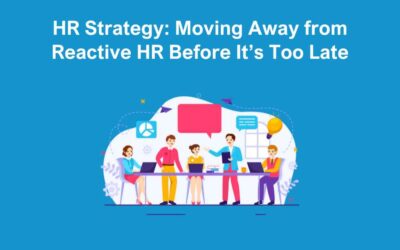Managing people effectively is crucial for any organisation’s success, and line managers play a pivotal role in this. They are often the primary link between employees and the business, responsible for creating an environment where team members feel motivated, supported, and engaged. In this post, we’ll explore why line managers are essential, the importance of getting to know your team, how regular one-to-one (1:1) meetings contribute to a productive workplace, and best practices for performance management and feedback.
As part of our Ask the Expert series, we caught up with Lynn to discuss the importance of Line Managers, Getting to know your team, 1:1 meetings, Performance Management & Setting Objectives, and difficult conversations.
Why Line Managers are Important
Line managers are essential to achieving organisational goals because they bridge the gap between senior leadership’s vision and the practical, day-to-day work of their teams. They translate high-level strategies into actionable tasks, ensuring that business objectives are not just understood but effectively implemented on the ground. Without capable line managers, even well-conceived strategies can fail in execution.
A happy and engaged workforce often reflects the quality of how employers are managing people. Line managers shape the team’s environment by providing guidance, support, and recognition. When employees feel valued and have regular feedback channels, they’re more likely to stay motivated and committed, fostering a culture of engagement and productivity that directly benefits the organisation.
Line managers are also key in implementing people policies and practices. From onboarding and performance management to development and well-being, they adapt corporate policies to meet the unique needs of their teams. By aligning organisational standards with employees’ goals, line managers ensure policies feel relevant and supportive rather than purely procedural.
As the interface between the organisation and its people, these senior roles play a dual role of translating company goals for employees while advocating for their team’s needs to senior leaders. This two-way communication fosters alignment and morale, ensuring that the workplace is both supportive and in sync with the organisation’s strategic objectives.
What Makes a Good Line Manager?
A good line manager is supportive, easy to talk to, and a good listener, making it comfortable for team members to share ideas and concerns. They trust others and engender trust within the team, building strong relationships that foster open communication and mutual respect. Clear, direct, and consistent in their communication, they ensure everyone understands priorities, expectations, and goals, reducing ambiguity and keeping the team aligned. This is an important aspect of managing people.
They focus on developing employees by setting rewarding and challenging goals that encourage growth and skill-building. Adaptable and able to respond to changing conditions, good line managers adjust plans as needed while keeping the team focused. They also manage upwards effectively, ensuring that the team’s needs and achievements are communicated clearly to senior leadership, bridging the gap between organisational goals and team success.
Getting to Know Your Team
When managing people, one of the first steps towards creating a productive environment is getting to know your team. This involves understanding each team member’s career aspirations, preferred working styles, strengths, and any areas for development. By taking the time to get to know your team, you can allocate tasks more effectively, provide support tailored to individual needs, and create stronger working relationships.
Building this understanding also helps you identify what motivates each employee, whether it’s recognition, career progression, or challenging projects. With a clear picture of what drives each team member, you can help foster a motivated, high-performing team.
A key to managing people effectively is to be transparent about your management style, openly sharing how you approach decisions, delegate tasks, and set expectations. By inviting feedback from your team, you can gain valuable insights into how your approach impacts their experience, allowing you to adapt and continuously improve as a manager.
The Importance of One-to-One Meetings
1:1 meetings foster open communication, allowing managers to offer real-time feedback, monitor progress, and address any obstacles early on. These meetings can also be an opportunity to acknowledge good performance, motivate team members, and make employees feel valued. From the employee’s perspective, regular 1:1s provide a platform to voice ideas, ask for support, and discuss career development.
Types of One-to-One Meetings
When managing people, different types of 1:1 meetings serve different purposes. Here are a few that can help keep team members engaged and aligned:
Informal Unstructured Meeting
An informal unstructured meeting is a spontaneous, ad-hoc discussion used to address immediate issues, provide quick feedback, or offer support without a set agenda. This flexible approach encourages open communication and quick problem-solving, often preventing minor issues from escalating. These meetings create a relaxed environment, making employees feel more comfortable sharing ideas and concerns, which strengthens trust within the team.
Informal Structured Meeting
An informal structured meeting is a planned, yet flexible, discussion focused on addressing potential issues early to avoid escalation, such as performance concerns or attendance issues. These meetings follow a loose framework that allows for proactive conversations, helping managers and employees openly discuss areas for improvement in a supportive way. The benefits include building trust, encouraging accountability, and providing an opportunity to address concerns before they require formal intervention, fostering a positive workplace culture.
Formal Structured Meeting
These meetings typically include return-to-work discussions, appraisals, disciplinary meetings, grievance handling, and absence reviews. This is a crucial way of managing people and maintaining transparency, accountability, and consistency. The use of structured formats ensures that critical steps are followed, documentation is clear, and that all relevant issues are covered. This can be essential for both compliance and fairness in how employees are treated.
Duration
In terms of duration, these meetings should be time-restricted to ensure they remain focused and efficient, ideally lasting no more than one hour. However, certain formal structured meetings, such as those dealing with complex disciplinary or grievance matters, may require extended time to allow for thorough discussion, fair representation, and detailed documentation. These more complex meetings should be given the time they need to ensure issues are addressed comprehensively and with due diligence, reflecting the importance of procedural integrity in formal management processes.
Performance Management and Setting Objectives
Effective performance management goes beyond annual reviews and is an important part of managing people. It’s an ongoing process that involves setting clear objectives, monitoring progress, and providing regular feedback. When managers and employees collaboratively set objectives, it creates accountability and ensures alignment between individual goals and the company’s overarching aims. Objectives should be SMART (Specific, Measurable, Achievable, Relevant, and Time-bound) to ensure clarity and accountability.
Setting clear expectations also helps prevent misunderstandings and provides employees with a roadmap to success. By regularly revisiting these objectives, managers can help their team stay focused, adapt to changing priorities, and make adjustments to improve performance.
How to manage performance
Managers can effectively manage performance through continuous observation, keeping a close yet supportive watch on team members’ work to identify both strengths and areas for improvement. Positive communication, even in difficult situations, is essential, as it helps maintain morale and ensures employees feel valued, which is especially important when managing people.
Early intervention is key; by addressing issues as they arise, managers can prevent minor concerns from becoming larger problems. This approach should be paired with decisive action, making clear decisions on how to address performance issues promptly. Managers should also provide constructive feedback that is specific, actionable, and aimed at helping employees grow.
It’s crucial to review and revise action plans if necessary, adapting approaches based on progress or changing needs. Throughout the process, maintaining a record of observations, feedback, and actions taken is essential for consistency, accountability, and future reference.
How to manage underperformance
Managing underperformance requires a proactive and supportive approach. Early intervention is crucial when managing people; address the issue as soon as it arises to prevent it from worsening. Begin with a private conversation to understand any underlying causes, using positive communication to show that your goal is improvement rather than criticism. Provide clear, constructive feedback, outlining specific areas for improvement along with measurable expectations. Set an action plan with achievable goals, and schedule follow-up meetings to review progress. If needed, adjust the plan and offer additional support or resources. Throughout the process, maintain a record of all discussions and actions to ensure accountability and consistency.
Performance Appraisal
A performance appraisal is a structured process where managers evaluate an employee’s job performance against pre-set objectives and expectations. This meeting serves as an opportunity for both managers and employees to discuss achievements, areas for improvement, and future goals in an open, constructive environment. Effective performance appraisals focus on providing specific feedback, recognising successes, and setting clear, actionable development goals. They should also be a two-way conversation, encouraging employees to share their perspectives and aspirations. When done well, performance appraisals can motivate employees, align individual efforts with organisational objectives, and create a pathway for professional growth.
Feedback and Difficult Conversations
Providing feedback is a critical component of effectively managing people. Constructive feedback allows employees to improve, while positive feedback boosts morale and reinforces desired behaviours. However, feedback isn’t always easy to deliver, especially when it involves difficult conversations. Here are some best practices for handling tough discussions:
- Prepare in Advance: Think about the key points you want to convey and how you will approach sensitive topics. Consider the employee’s perspective and potential responses.
- Stay Focused on the Issue: Focus on specific behaviours or outcomes rather than the individual. For example, rather than saying “You’re not reliable,” frame it as “I’ve noticed there have been delays in meeting project deadlines.”
- Encourage Dialogue: Allow the employee to share their perspective and respond to your points. This makes the conversation feel more collaborative and less confrontational.
- Offer Solutions: Be prepared to suggest ways for the employee to improve, and offer support if needed. This could involve training, mentorship, or adjusting workload.
- Follow Up: Ensure you check in with the employee after a difficult conversation to see how they’re progressing and to provide further guidance or encouragement.
Difficult conversations, when handled effectively, can lead to better relationships, improved performance, and a stronger team overall. They are a crucial part of performance management and should be approached with empathy and professionalism.
Conclusion
The role of a line manager in managing people effectively cannot be overstated. By getting to know your team, conducting regular 1:1 meetings, setting clear objectives, and providing timely feedback, managers can create a work environment that promotes growth, engagement, and high performance. Skilled line managers not only guide their teams towards achieving business goals but also help individuals realise their full potential, making the workplace a more fulfilling and productive space for everyone.
Investing in effective line management practices is an investment in the entire organisation’s success.







